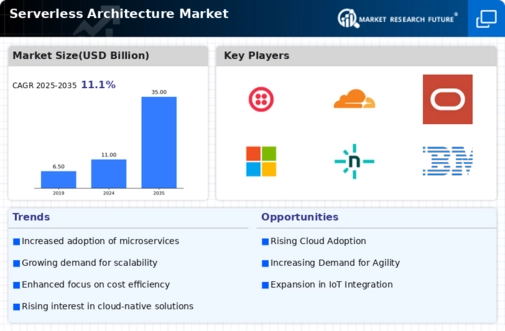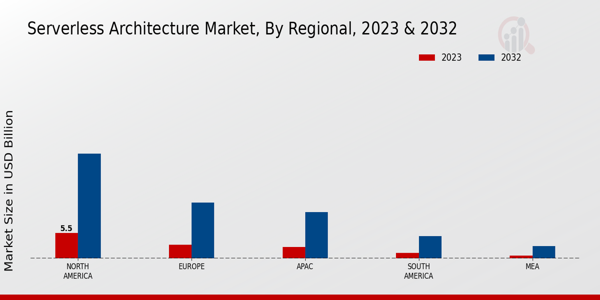Market Trends
Key Emerging Trends in the Serverless Architecture Market
The serverless architecture market is witnessing several noteworthy trends that are reshaping the landscape of modern computing. One prominent trend is the increasing adoption of serverless computing by businesses of all sizes. Organizations are recognizing the advantages of serverless architectures, such as reduced operational overhead, faster time-to-market, and enhanced scalability. This is ignited by the need to simplify the development procedures, and allocating resources expeditiously, which indicates a shift from the conventional methods of infrastructure management. The AI and ML deployment into serverless architecture is also are emerging. Organizations in pursuit of a data-driven approach will find serverless computing optimization to be the ideal option for AI and ML deployment and scaling. Such trend shows that companies are coming to understand the value of serverless and data-driven technologies convergence as a synergy that allows enterprises to glean insights and drive innovations in a more agile and cost-efficient way. Additionally, event-driven plans are being more and more used for serverless architectures. Serverless architecture's ability to invoke functions in response to events make the model suitable for occasions when the actions are instigated due to occurrences of specific events. The serverless paradigm underlies event-driven and serverless function applications, which are used in tasks such as data stream processing, IoT devices, and serverless APIs. It therefore mirrors the flexibility of serverless nature, providing solutions which adhere to the ever-changing and complex nature of digital networks of today. With the rise of serverless security becomes one of the important trends considering how more and more sensitive apps and data are being moved to serverless environments. With the advent of serverless architecture, that serves as one of the main challenges, like function-level permissions and shared responsibility models, there is more focus on the strict security practices. This trend highlights the importance of incorporating security measures into the entire development lifecycle, from code creation to deployment and ongoing monitoring, to ensure the integrity and confidentiality of applications running in serverless environments.


















Leave a Comment